► Honda’s second Type R, after the original NSX
► Light weight, and a VTEC engine that revs to 8,700rpm
► Billed as the best front-wheel-drive car ever
‘Possibly the best front-driver of all’ was CAR’s verdict in 1998. Countless others would echo the sentiment, often without the ‘possibly’. The epithet instantly became part of the Integra Type R myth: emblazoned across its CV in life, then engraved on its tombstone after death.
Two decades on, the time seems right for reappraisal. Has the ‘best front-driver’ accolade become an albatross? Can an unassuming 187bhp coupe still excite in a world of 400bhp hyper-hatches? I needed precisely zero encouragement to find out.
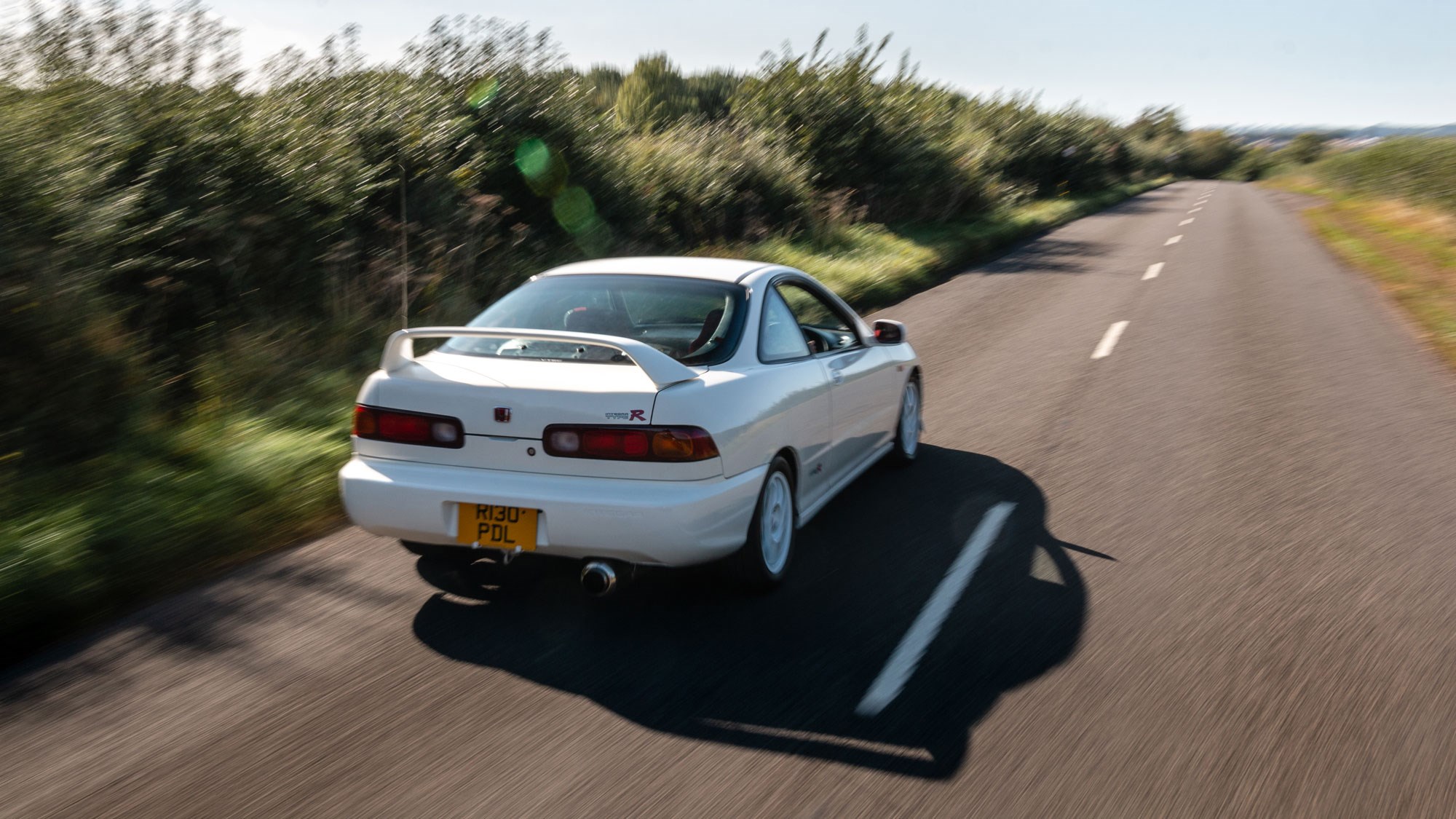
Gran Turismo aficionados will have spotted this Type R, owned by Nick Bailey of Elan PR, is a grey import. We’ll delve into the differences between Japanese Domestic Market (JDM) and UK cars shortly, but rest assured both are very similar to drive.
VTEC just kicked in, yo!
The original Integra Type R – known to Hondaphiles as the DC2 – has all the trappings of a pukka homologation special, yet it was never intended for racing. Refreshingly, Honda didn’t even publish a Nürburgring lap-time.
The 1.8-litre four-cylinder B18C engine was hand-built for high revs. Modifications include new pistons, lightened con rods, tubular intake and exhaust manifolds, a wider throttle body and, of course, VTEC variable valve timing. For the uninitiated, this hydraulically switches the cam profile at a fixed point in the rev-range, prompting a frenzied rush to the redline. It’s the ‘VTEC just kicked in, yo!’ moment of a million internet memes.
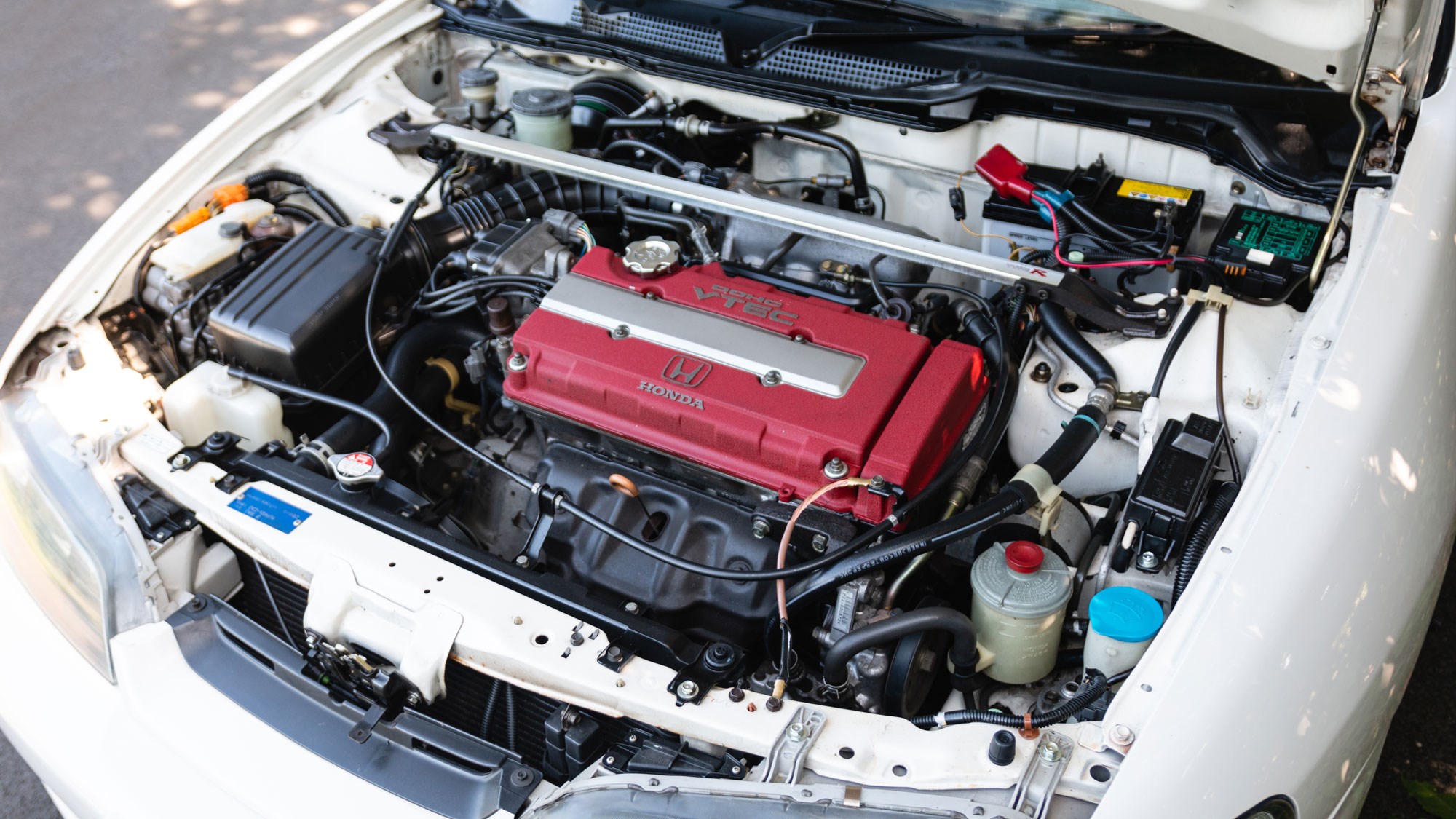
A close-ratio five-speed manual gearbox drives the front axle via a helical limited-slip differential. Honda quotes 187bhp at 8,000rpm for UK cars: a naturally aspirated 104bhp per litre. Best of all, the limiter doesn’t call time until 8,700rpm, just 300rpm shy of the S2000’s famed F20C screamer. The downside is a paltry 131lb ft of torque, which scarcely arrives any sooner.
The Integra’s chassis was also beefed-up with extra spot welds, stronger rear suspension mounts and reinforced subframes. Much of the sound deadening was binned to cut kilos, and even the windscreen glass is 10 percent thinner. A kerb weight of 1125kg is similar to a new Honda Jazz.
When going grey was all-white
The DC2 was the second Honda to wear a red ‘H’, following the rare-groove NSX Type R of 1992. After debuting in Japan in 1995, it didn’t come to Britain until three years later – at least not officially – then remained on sale until 2001.
Only 500 cars were allocated for the UK, which led to a steady stream of imports, fuelled by the weak yen and concurrent mania for all things STi, Ralliart and Nismo. Depending on the market, red, black, silver and yellow paint colours were available, but the vast majority are Championship White.
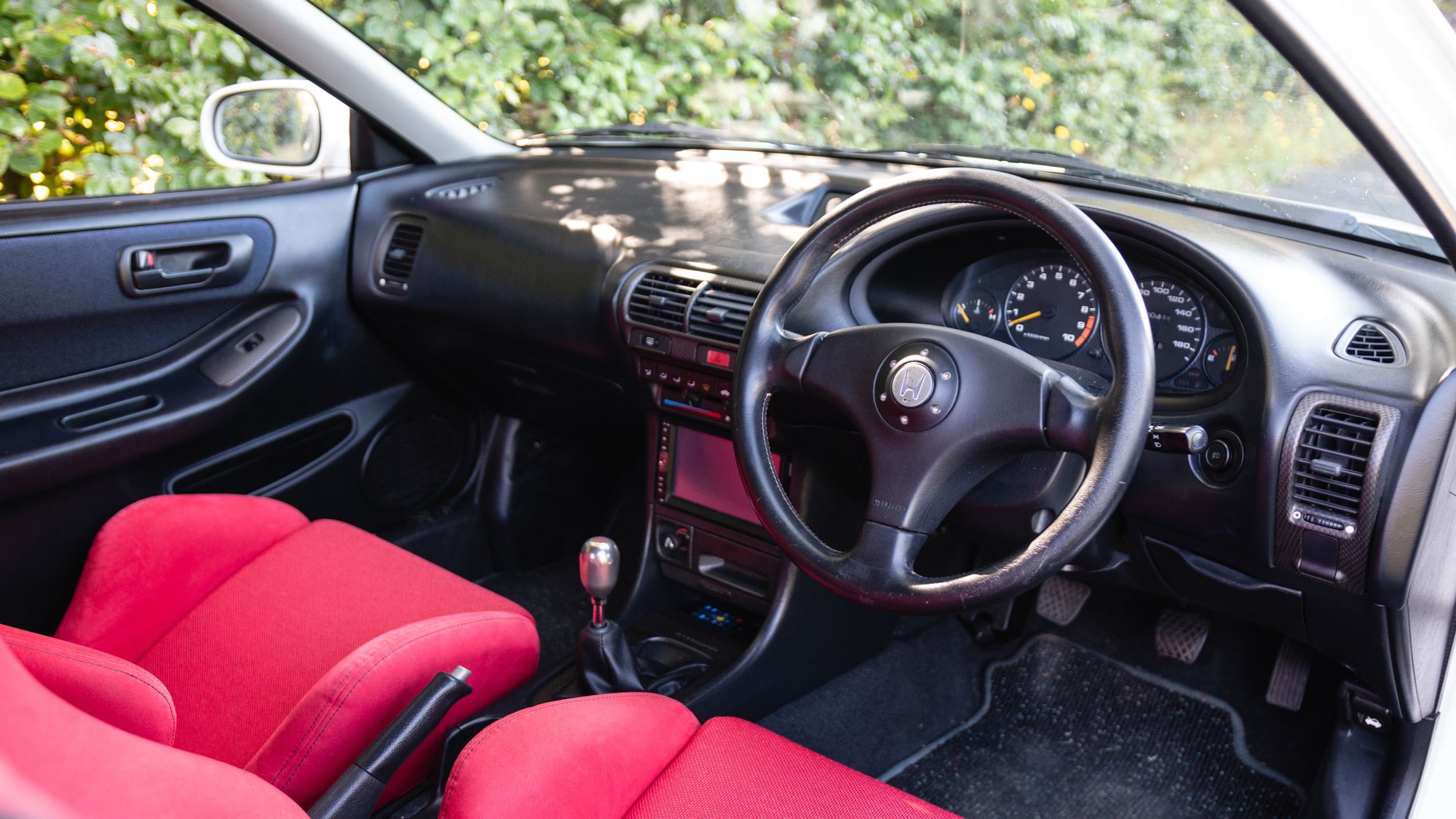
Japanese cars like Nick’s 1997 model have an extra 10bhp and a smidgen more torque, plus around 80kg less weight. They’re also less prone to rust, as the plastic rear wheelarch liners of British DC2s are a notorious water-trap. The most obvious difference between UK and JDM, though, is the headlights: twin round lamps for the former, long lozenges for the latter.
Either way, the ungainly Integra is no NSX or S2000 to look at. Yet it’s also pleasingly subtle next to today’s excess-all-areas Civic Type R. Despite a fleeting cameo in The Fast and the Furious, it has largely escaped the attention of the slam-and-stance set, too.
Magic seats, but not like a Jazz…
If the DC2’s exterior is understated, its cabin is plain underwhelming. The shiny plastic dash is straight from a 90s Honda econobox, with token slivers of ‘carbon fibre’ that, on closer inspection, are also shiny plastic. The coarse carpet looks lifted from the floor of a Portakabin and standard equipment is sparse. Air conditioning and a CD player both cost extra.
All this makes the bright red Recaro seats look even more incongruous, like a pair of brake lights gleaming in the gloom. Less hardcore than the Status carbon-kevlar fixed buckets of the NSX-R, they’ve been a signature of the Type R franchise ever since. Shame Honda has never gone ‘full bloodbath’ and trimmed the rear bench to match.
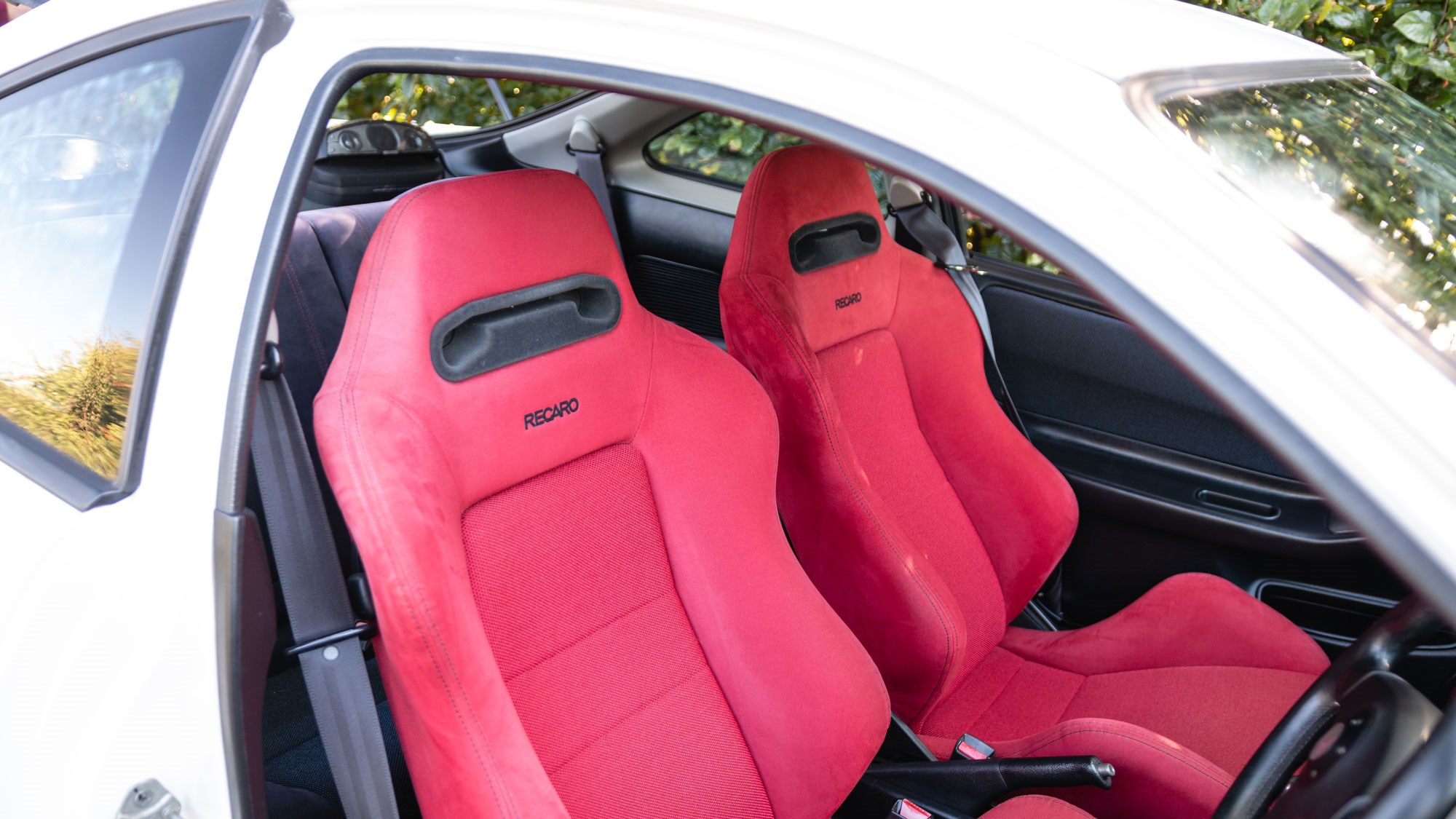
I arch my buttocks oh-so-carefully over the bulky side bolster – try finding an Integra where this hasn’t been scuffed – and everything sharpens into focus. The three-spoke wheel is thick-rimmed and functional, the Recaro snug and supportive. Twisting the key, the plain dials with Porsche-style script and bold yellow needles leap to life. The titanium-topped gearlever, cold to the touch, notches neatly into first. No pressure…
Tense and sensibility
The steering is an immediate slam-dunk. Hydraulically power-assisted, it somehow contrives to feel both weighty and delicate, measured yet fervently direct. Soon I’m using my fingertips, savoring every jostle of feedback, tug of the front diff and carefully carved apex. Among the current crop of front-drivers, only the Fiesta ST comes close. Perhaps it’s no coincidence Nick has one as his daily-driver.
There’s a degree of throttle adjustability, too. Turn in, accelerate, and the Integra digs in and tightens its line. Then, when you might expect understeer, there’s a shift in attitude as the rear end starts to rotate. If exuberant, Tokyo Drift slides are your thing, a GT86 or BRZ does a better job. But the Type R’s mid-corner malleability adds a frisson of sophistication, setting it apart from all but the finest hot hatches.
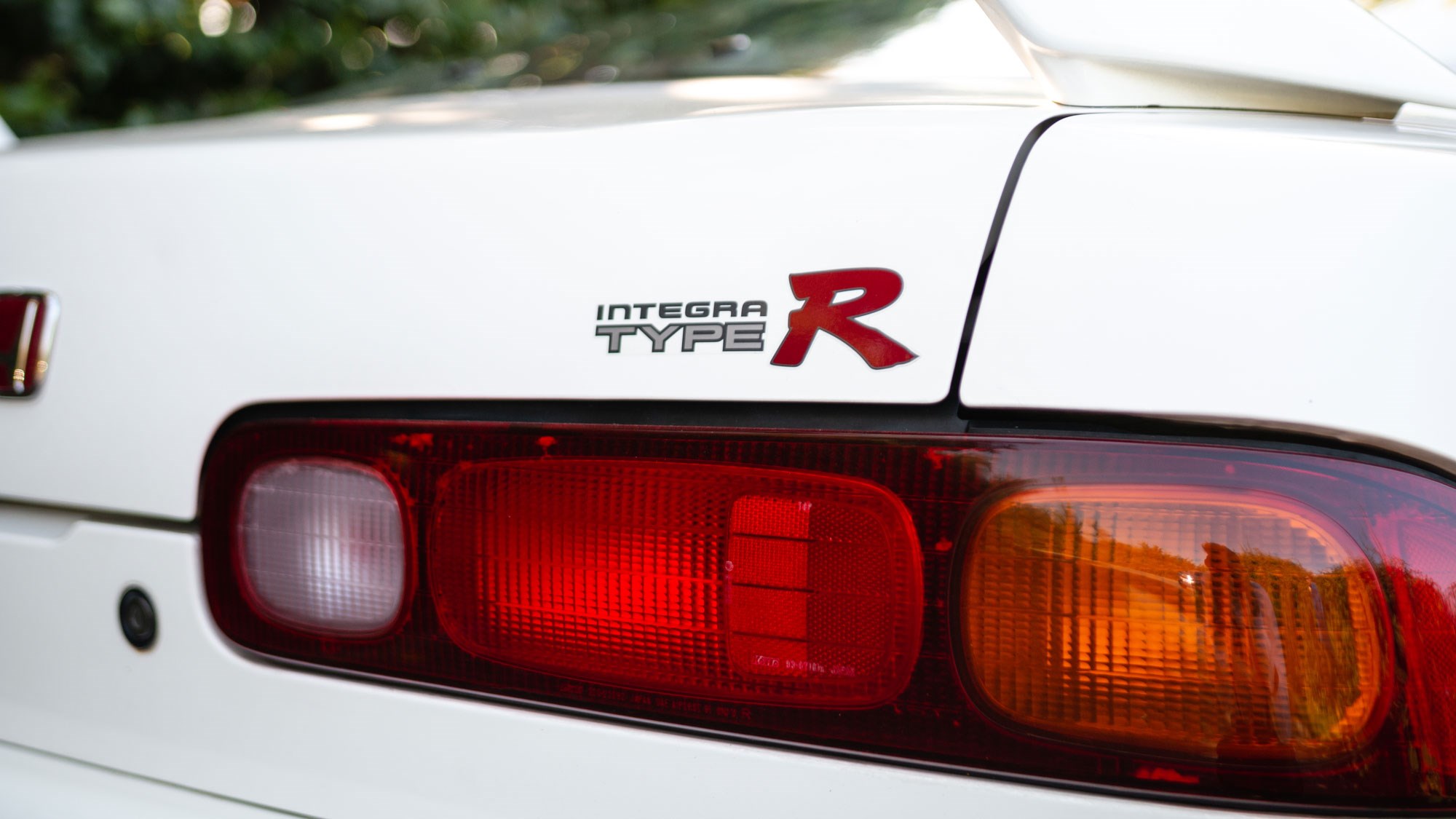
You’ll search in vain for any sport or comfort modes here. You adjust your driving to suit the car, not the other way around. And the Integra is always on: up on its toes and primed for action. However, while it feels restless at low speeds, the suspension quickly settles and finds its flow, helped by small 15-inch alloys and 55-profile tyres. A buzzy 4000rpm-at-70mph cruise is the only real impediment to long-distance comfort.
Hitting the high notes
Let’s remember, though, that 4,000rpm is less than half-way around the Type R’s tacho. And while the four-pot motor is content to potter around town, it’s gagging to work up a sweat. That VTEC moment arrives at 5,800rpm, soaring and sonorous, like the key-change in a power-pop anthem. You’ll find yourself shifting down just to repeat the rush.
In some ways, the effect is like old-school turbo lag: a delayed gratification that goads you into going faster. However, while turbochargers tend to mute an engine’s voice and muzzle its redline, VTEC has the opposite effect. The Integra is hardly musical, but it sounds starkly mechanical, with an insatiable appetite for revs. With a few soon-to-be-extinct exceptions, they simply don’t make engines like this anymore.
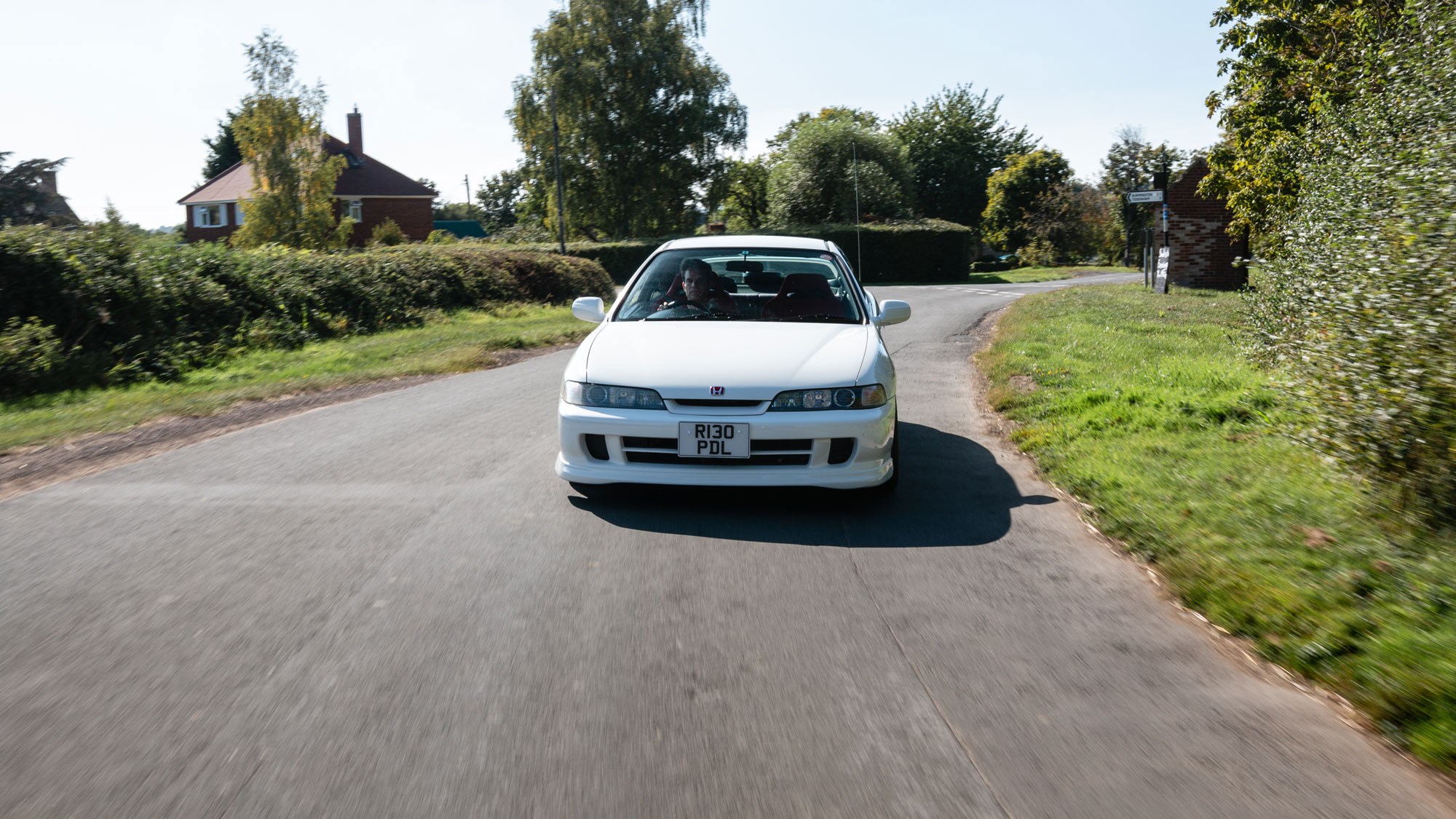
Indeed, they don’t make cars like this anymore. A stripped-out, naturally aspirated coupe with a non-premium badge reeks of commercial harikari in 2020. It’s the antithesis of today’s bloated crossovers – and all the more glorious for that. We will never see its like again.
Honda Integra Type R: verdict
The classic market has woken up to the Integra Type R and prices have entered the VTEC zone. If you want one – and trust me, you do – expect to pay upwards of £8,000, and well into five figures for the best cars. With just 831 registered on UK roads (according to How Many Left), the only way is up.
Nick and his 830 compatriots are guardians of something special. On the right road, this quirky coupe feels as raw and exhilarating as many a mid-engined exotic. It fizzes with kinetic energy, despite its relatively modest means. As cars become more complicated, the single-minded Type R is a detox for the soul.
Still the best front-driver of all, then? Possibly.